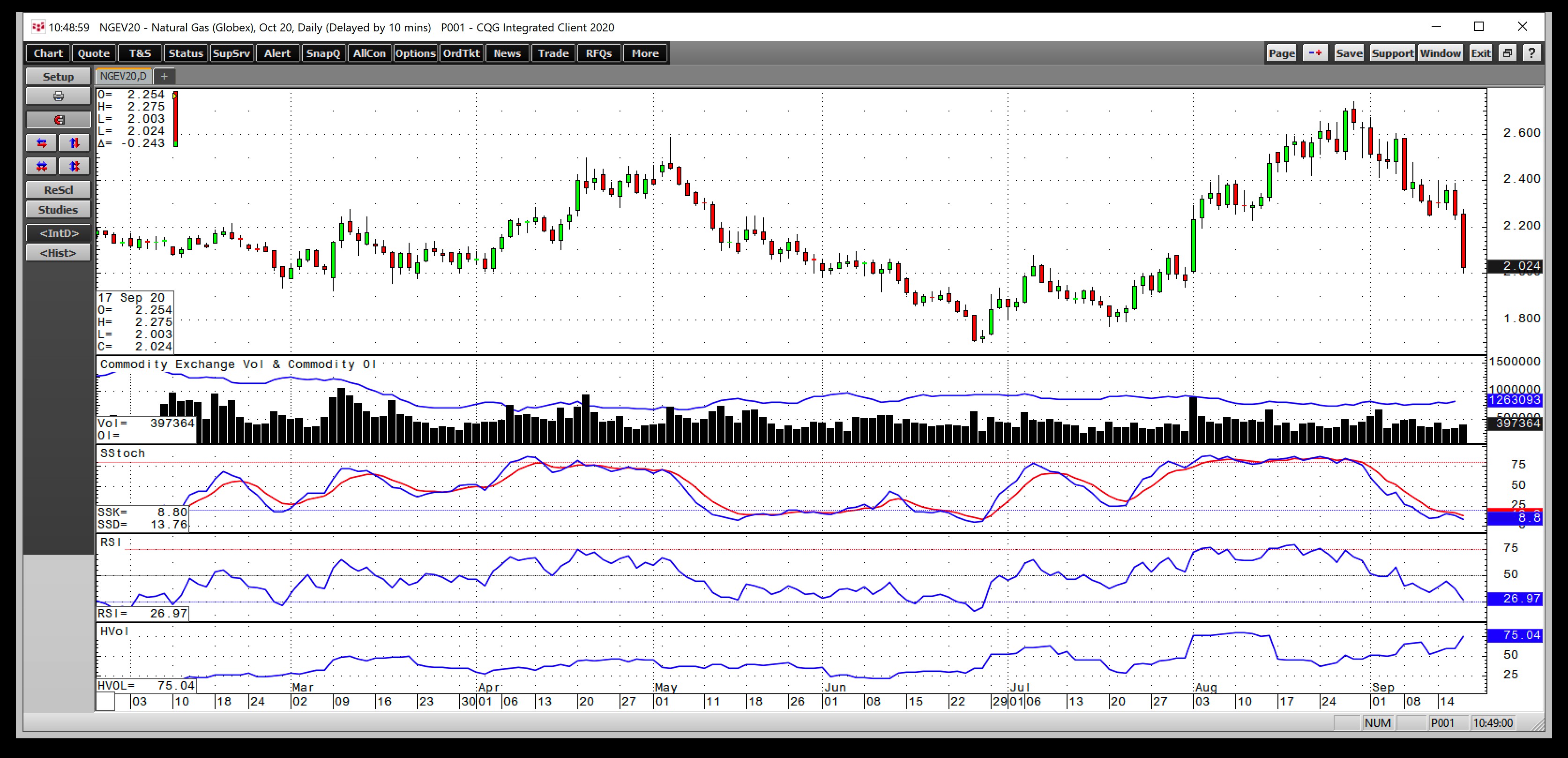Time flies. It seems like yesterday when the winter season of 2019/2020 ended, and natural gas began flowing into storage across the United States in March. Stockpiles fell to a low of 1.986 trillion cubic feet at the end of last winter, which was substantially higher than the previous year when they were at 1.107 tcf at the start of the injection season.
The active month natural gas futures contract on NYMEX is now October, and it will not be long before it rolls to November, the month when increasing demand for natural gas will cause the level of stockpiles to decline. Demand amidst the global pandemic remains the most significant factor for energy commodities in the current environment. However, the U.S. election could determine the future path of energy policy in the world’s leading producer of oil and gas.
As we head towards November, natural gas inventories will be higher than last year when they peaked at 3.732 tcf. After the EIA’s latest supply data, it looks like they will rise above four tcf for the third time since the agency began reporting data. The United States Natural Gas Fund (NYSE:UNG) follows the NYMEX natural gas futures price higher and lower. The (NYSE:BOIL) and KOLD (NYSE:KOLD) ETN products provide market participants with leverage on the up and downside without venturing into the futures arena.
Market Expected 79 bcf Injection Into Storage
According to Estimize, a crowdsourcing website, the consensus was for a 79 billion cubic injection into natural gas storage across the United States for the week ending on Sept. 11.

Source: CQG
As the chart highlights, the EIA reported an injection of 89 billion cubic feet, lifting the total amount of natural gas inventories to 3.614 trillion cubic feet as of Sept. 11. While Thursday’s data was the most substantial injection since mid-June, the percentage over last year’s levels declined to 17.4%, which was the 24th consecutive drop. There was 13.2% more natural gas in storage as of the end of last week than the five-year average.
Stockpiles are heading into the peak season for demand at an elevated level.
Supplies Steaming Towards 4-Trillion-Cubic-Feet Level
The 2020/2021 withdrawal season in the natural gas market is approximately nine weeks away. Exceeding last year’s peak of 3.732 trillion cubic feet would require an average injection of 1.4 bcf. The level of stockpiles will move above last year’s high in next week’s EIA release.
Since the EIA began reporting supply data, natural gas in storage at the start of the winter months only rose marginally above the 4-trillion-cubic-feet level twice, in late 2015 and 2016. In November 2016, stockpiles climbed to a record 4.047 tcf.
Reaching a new peak in 2020 would require an average injection of 48.3 bcf over the next nine weeks. The high level of stocks sent the natural gas price back to the $2 level on Sept. 17, after trading at a new high for 2020 less than one month ago.
Inventories Remain A Warning Sign
Natural gas fell to its lowest price since Aug. 3 when it hit $2.003 per MMBtu on the NYMEX October futures contract.

Source: CQG
Time will tell if the $2.003 per MMBtu low on Sept. 17 will create a double bottom formation, or if it is a gateway to prices below the $2 level. The total number of open long and short positions in the natural gas futures market has not moved all that much over the past month as it remained in a range between 1.23 and 1.262 million contracts. The decline from $2.743 to $2.002 sent price momentum and relative strength indicators into oversold territory on the daily chart. Meanwhile, the spike lower on Sept. 17 lifted daily historical volatility above 75%, the highest level since mid-August.
I had been bearish on the natural gas market during the rise to $2.743, and once it turned lower. Taking profits at below $2.10 makes sense. The peak season for demand is only nine weeks away, so I believe natural gas will find a higher bottom than the late June low. However, the level of stockpiles will make reaching the November 2019 high and level of critical technical resistance at $2.905 a challenge.
I am more comfortable with a long than a short position at the $2 level. However, I would use a tight stop on any position.
